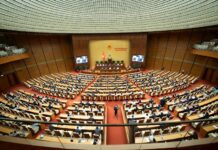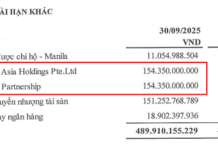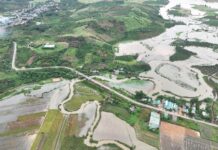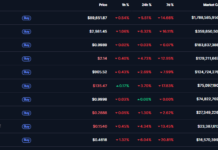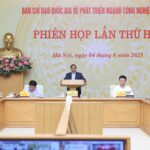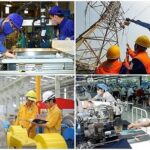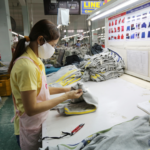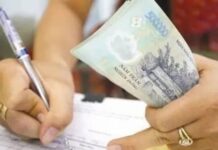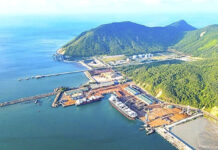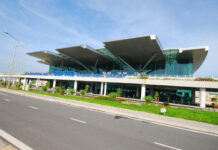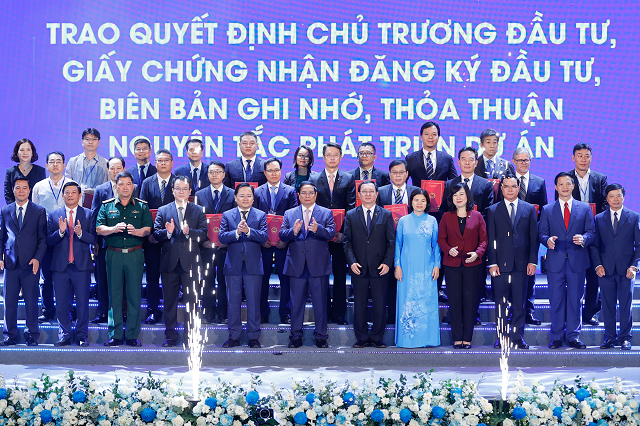Vietnam Fast-tracks Investment in Infrastructure and the Economy
On August 19, 250 projects with a total investment of approximately VND 1.28 quadrillion were inaugurated and commenced across Vietnam. Of these, 129 projects utilize state capital, accounting for VND 478 trillion, or 37% of the total investment. The remaining 121 projects are funded by other sources, contributing VND 802 trillion, or 63% of the total.
Mr. Le Anh Tuan, Deputy Minister of Construction, emphasized that these projects are expected to contribute over 18% to the Gross Domestic Product (GDP) this year and over 20% in the following years.
“The projects using state budget will create a strategic infrastructure framework, thereby leading and attracting private investment,” said Deputy Minister Le Anh Tuan.
In addition to public investment, there are also projects funded by private sector investment, including foreign direct investment (FDI) projects. Among the hundreds of projects, five are FDI-funded, with a total investment of VND 54 trillion. This showcases the government’s significant efforts in mobilizing social resources for investment, production, and business, especially in building strategic infrastructure.
According to the Ministry of Finance, to achieve the growth target of 8.3-8.5% this year, total social investment must increase by 11-12% compared to the previous year. Specifically, in the last six months of the year, mobilized and realized social investment capital should reach approximately VND 2.8 quadrillion.
The State Bank of Vietnam has calculated that to attain the high growth target, credit must increase by 16% this year, with about VND 2.5 quadrillion injected into the economy. Recently, the bank announced a credit package of VND 500 trillion from 21 banks for science, technology, innovation, digital transformation, and strategic infrastructure (including transportation, power, and digital infrastructure).

Strong capital inflows into transport infrastructure.
|
In reality, many banks have already provided loans for projects in science, technology, innovation, digital transformation, and strategic infrastructure, such as the Long Thanh Airport, Nhon Trach 3 and 4 Power Plants, and the Laos Cai – Vinh Yen transmission line. They have also financed various BOT projects, power production, and transmission projects. Most recently, the bank has participated in financing a portion of the 500kV transmission line project…
Mr. Hoang Minh Ngoc, Deputy General Director of Agribank, stated, “Having assets or a credit guarantee is just one of the conditions; banks usually lend based on the customer’s credibility. For example, for this package of VND 500 trillion, businesses only need to prove their eligibility to obtain the loan.”
Caution on Inflation Risks
To achieve the 8.5% growth target for this year while maintaining inflation control, macroeconomic stability, and the economy’s major balances, monetary policy plays a crucial role.
The banking sector must increase capital supply to the economy. This also compels the authorities to tackle the challenge of directing capital flow into priority sectors and preventing banks from engaging in deposit interest rate competition as credit demand surges.
So far this year, the interest rate on deposits has remained stable, and lending rates have even decreased by 0.4% compared to the end of last year. Inflation is still under control.
However, inflationary pressures are mounting, and increasing the money supply will further intensify these pressures. Moreover, exchange rates are under strain due to the dual impact of economic factors and market sentiment.
Economist Ngo Tri Long affirmed that injecting substantial capital into the economy is intended to boost economic development. This capital is concentrated in infrastructure projects that stimulate economic growth and generate positive spillover effects.
Nonetheless, Mr. Long cautioned that the initial success in curbing inflation during the first six months resulted from the effective coordination of monetary, fiscal, trade, and price management policies. However, the path ahead remains uncertain, and maintaining the CPI target of 4-4.5% for the entire year necessitates consistent and flexible governance, along with enhanced forecasting capabilities and proactive policy responses.
Specifically, the State Bank of Vietnam should maintain a stable basic interest rate, focus credit growth around the 16% target, and direct credit flow towards export and production sectors vital for GDP growth, avoiding widespread lending that could fuel price hikes.
Fiscal policy should provide controlled support and refrain from significant tax and fee adjustments to prevent cost-push inflation from affecting end consumers. Already disbursed public investment (36% as of June) should be directed towards infrastructure and internal capacity building, increasing medium-term supply without abruptly creating short-term demand pressure…
Ngoc Mai
– 18:32 22/08/2025
“Catalyst for Change: Empowering Vietnam to Bridge the Gap and Engage in the Global Value Chain”
The inaugural collaboration forum brought together over 50 senior leaders from government, academia, and industry to chart a course for Vietnam’s entry into the global semiconductor race.
“Institutional Refinement for the Semiconductor Industry: Ensuring Energy and Human Capital”
The announcement, Directive 439/TB-VPCP, underscores the imperative for ministries and sectors to collectively address key bottlenecks in infrastructure, institutions, human resources, and energy. By doing so, and by actively promoting international cooperation and localizing supply chains, Vietnam’s semiconductor industry can achieve a breakthrough and ascend to new heights.
The Golden Opportunity: Unveiling the Potential of Vietnam’s Textile and Footwear Industries
The textile and footwear industry is pioneering innovative solutions to boost consumption and build iconic Vietnamese brands. With a strategic focus on balancing exports and the domestic market, the industry aims to create a sustainable and resilient future.







